In this tutorial, we will be exploring how to set up a Raspberry Pi AirPlay Receiver.
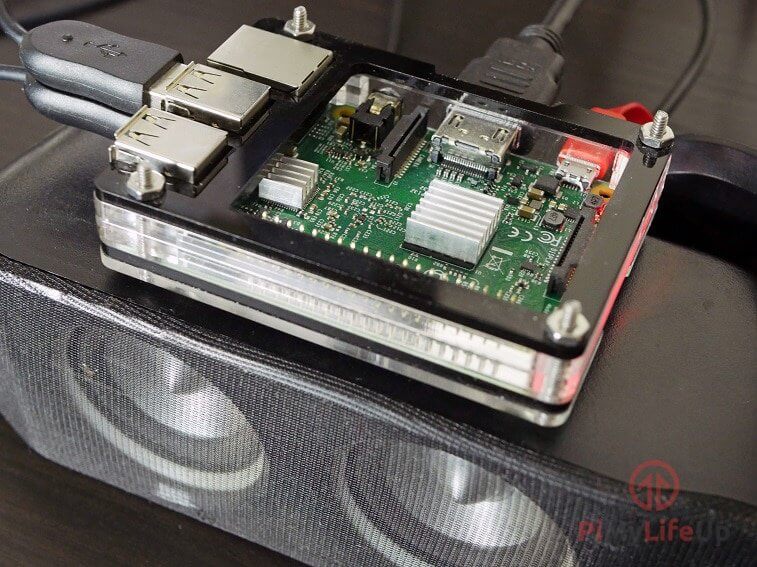
This tutorial primarily involves you connecting your Raspberry Pi to your speakers then installing software so that it becomes recognized as an AirPlay receiver on your internet network. To set up your AirPlay Receiver, we will be making use of the open source software called Shairport Sync.
This software allows the Raspberry Pi to act as an AirPlay receiver by implementing Apple’s proprietary protocols so that it can receive music from those devices.
This setup will allow you to play music from any AirPlay-enabled device to your Raspberry Pi meaning you can use almost any iPhone product and even some Android products with a compatible app installed.
A Raspberry Pi AirPlay Receiver is very simple and cost-efficient way to setup wireless speakers without the huge cost of buying a set of wireless speakers. It can easily help you modernize your speakers and help cut the cord.
As a bonus, this tutorial works perfectly alongside our Raspberry Pi Alexa tutorial and is excellent for bringing in music support to the tutorial.
Equipment List
Below are all the bits and pieces that I used for this Raspberry Pi AirPlay Receiver tutorial, you will need an internet connection to be able to complete this tutorial.
Recommended
- Raspberry Pi Amazon
- Micro SD Card Amazon
- Power Supply Amazon
- Ethernet Cable Amazon or Wi-Fi Amazon
- Speakers Amazon
- AirPlay Enabled Device Amazon
Optional
- Raspberry Pi Case Amazon
Setting up an Apple AirPlay Receiver
Setting up your Raspberry Pi AirPlay receiver is an incredibly simple task, as long as you have a good internet connection and a set of speakers to connect your Raspberry Pi to it is a relatively straightforward process.
1. Before we get started let’s first run an update and upgrade on our Raspberry Pi to ensure we are running the latest software.
sudo apt update
sudo apt upgrade2. Once that has completed we need to install several different packages, run the following commands on your Raspberry Pi to install all of the packages that we need.
sudo apt install autoconf libtool libdaemon-dev libasound2-dev libpopt-dev libconfig-dev
sudo apt install avahi-daemon libavahi-client-dev
sudo apt install libssl-dev3. We will now clone the shairport-sync source to our Raspberry Pi. Shairport-Sync is the best fork of the original Shairport code and allows syncing across multiple rooms.
Run the following commands on your Raspberry Pi to download the source code to your Raspberry Pi.
cd ~
git clone https://github.com/mikebrady/shairport-sync.git4. Now that we have cloned the Shairport-Sync repository to our Raspberry Pi we can now build and install the Shairport software.
Before we get started, we must first move into the shairport-sync folder and configure the system. To do this, we must run a few commands on our Raspberry Pi.
cd shairport-sync
autoreconf -i -f
./configure --with-alsa --with-avahi --with-ssl=openssl --with-systemd --with-metadataThe autoreconf command setups the basic config file. The configure command further sets up the build system, telling it to utilize the ALSA audio backend, the Avahi network and set it to use OpenSSL for encryption.
5. With the configuration process now completed we can finally compile Shairport-sync and install it.
We can run the two make commands below on our Raspberry Pi to compile and install Shairport-Sync to the device. This process will set up numerous things including the autostart script.
make
sudo make install6. To enable the Shairport Sync software to start automatically at system startup you need to enter the following command into the terminal on the Raspberry Pi.
sudo systemctl enable shairport-sync7. Finally, we can start up the Shairport software immediately by running the command below on our Raspberry Pi.
sudo service shairport-sync startYou should now be able to play audio files through your Raspberry Pi AirPlay Receiver using any AirPlay-capable device. If you are using a non-apple device such as an Android device, then there are few apps that allow you to utilize Airplay.
On your AirPlay-enabled device your Raspberry Pi AirPlay receiver should appear as RaspberryPi in the devices list, please note that this name will be the same as your devices hostname.
If you would like to know how to change your Raspberry Pi’s hostname, you can check out our raspi-config guide.
Improving the Analogue Audio Output
With our Raspberry Pi AirPlay receiver now setup. There are several different things we can do to improve it. The first of these is to change the Raspberry Pi so it will utilize a newer version of the audio driver.
To run this improved audio driver and get the benefits of it fully then there are a few changes we will have to make. If you would like to read about the audio driver, you check out this topic on it on the Raspberry Pi forums.
1. Firstly we need to update the Raspberry Pi’s firmware, and we can do this by running the following command, it can take some time. Make sure your Raspberry Pi doesn’t lose power during this.
sudo rpi-update2. Once the firmware update has completed, turn off your Raspberry Pi and take out your SD Card.
Once you have removed your SD Card, insert the SD Card into a reader connected to a computer. The reason for this is that we need to modify the Raspberry Pi’s boot config file
The file we are after is located at /boot/config.txt on the SD Card, open it up with your favorite text editor. Add the following new line to this file.
audio_pwm_mode=2Once you have edited this file, you can save it and place the SD Card back into your Raspberry Pi and power it back on.
3. With your Raspberry Pi powered back on, there are two more things we need to do before the improved analog audio driver works well with Shairport. The next step is to set it, so the analog jack is the main audio out and not the HDMI output.
We can utilize the following command in the Raspberry Pi’s terminal to do this.
amixer cset numid=3 14. Now there is one final thing we must do to finish improving our Raspberry Pi AirPlay device, and that is to modify the volume db Range that Shairport uses. We can modify the range by changing it in the configuration file.
Run the following command to begin editing the configuration file.
sudo nano /usr/local/etc/shairport-sync.conf5. Within this file make the following changes.
Find
// volume_range_db = 60 ;Replace with
volume_range_db = 30;We can now save the file by pressing CTRL + X then pressing Y and then ENTER.
6. Now to make sure all these changes are properly loaded in, we will restart the Raspberry Pi by running the following command.
sudo rebootImproving your Raspberry Pi AirPlay Receivers Wi-Fi Performance
1. To improve the Wi-Fi performance of your AirPlay device, you will want to disable the Raspberry Pi’s WLAN adaptor power management. This reason for this is that it can prevent Shairport from being visible on your list of Airplay devices due to it powering down the Wi-Fi adaptor.
Luckily it is easy to stop the Raspberry Pi from doing this with most adaptors. The way to do this is by modifying the network interfaces file. We can open the file by using the following command in terminal.
sudo nano /etc/network/interfaces2. Within this file, we need to locate and add the following text to the interfaces file. This edit will tell the Raspberry Pi not to manage its wireless power and will not turn it off to save power.
If you have upgraded to Raspbian Stretch then wlan0 may be called something different. If you’re unsure which one is the correct one to use, then use the ifconfig command to see what the new name is.
Find
iface wlan0 inet manualAdd Below
wireless-power offWe can now save the file by pressing CTRL + X then pressing Y and then ENTER.
3. Now to make sure all these changes are properly loaded in, we will restart the Raspberry Pi by running the following command.
sudo rebootYou should now hopefully have a fully working Raspberry Pi AirPlay receiver. If you have any issues or feedback, then feel free to drop us a comment below. If you enjoyed this tutorial, then be sure to check out our other projects.


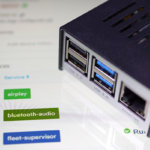


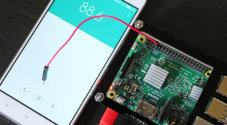

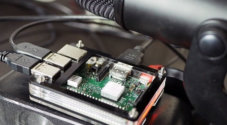
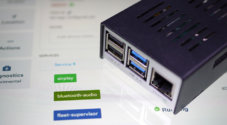

Hi
Marc again and again…
This is an update.
I solved it; I had to specify the output hardware device in the config file.
All is fine now… for now…
Sorry for the trouble…
Marc
Hi,
Marc again. I forgot to say that I use a JustBoom DAC HAT as the output device on the raspberry…
TA
Hi,
As soon as I try to play something from Music on iPad, shairport-sync crashes with : shairport-sync[763]: fatal error: alsa: error -524 (“Unknown error 524”) opening alsa device “default”.
Running on raspberry pi 3, latest release of system, installation went okay… the airplay stream is available…
Any idea is very welcome!
Marc
Great job, easy to follow and it worked on the first try!
Wow! What a difference in the sound output. Great guide ever. I had an issue trying to mount the boot partition as write and read but I found out it can be done right at the raspberry machine. Thank you so much
What a great guide – it worked out of the box for me, and with great explanations of the step-by-steps. Thumbs up to this.
Thank you!
Just wanted to follow-up. I was able to get it installed and working (just started over, I think it was a wifi issue). However, the volume is way less than I had hoped for. I played with the config, but I can’t seem to get it into like a party level of listening.
I assume this is an issue with the DAC that’s on RP? If so, I wish I knew about this in advance… at least I can still return the RP. 🙁
Hey Matt,
Sadly the DAC that is included in the Raspberry Pi is a bit sub standard for any serious audio. You can purchase addon boards for the Raspberry Pi that gives you access to a better DAC such as the Hifiberry, however we have not yet personally tested these.
Yeah it’s a bummer. I’m not an audiophile, I just want to be able to play music loud in outdoor parties. I appreciate the feedback. Using the aslamixer (sp?) I was able to make it louder w/o distortion but reboots put it back to the low vol again.
Do I need specific DACs like that, or are USB sound cards good enough?
Hey Matt,
If you use the command,
sudo alsactl storeafter making your changes within the alsamixer tool it should make your changes reload on reboot.Sadly I haven’t tested either of them so I can’t really give you a good answer on that at this time. It’s one of the things we have been planning on doing articles and research on but have yet to get around to it.
Cheers